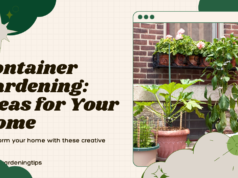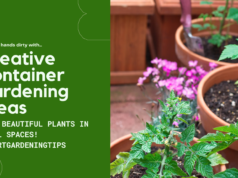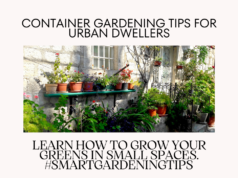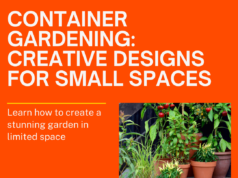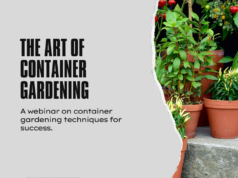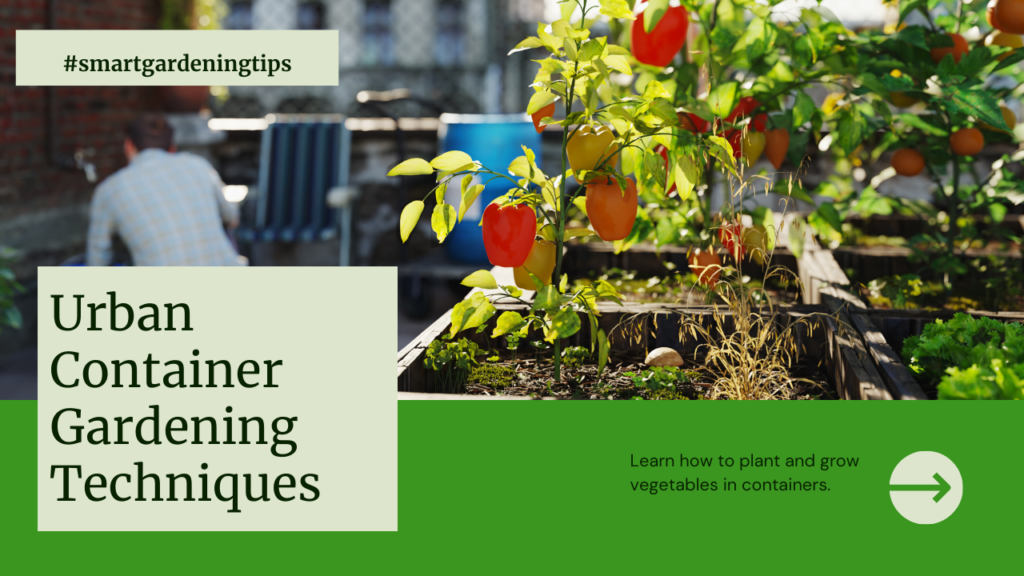
Welcome to the world of urban container gardening! If you live in a bustling city and have limited outdoor space, this article is for you. Urban container gardening techniques allow you to create a green oasis right in the heart of the concrete jungle. Whether you have a sunny balcony, a small patio, or even just a windowsill, you can transform your space into a thriving garden filled with lush plants and vibrant flowers.
In this section, we will explore a variety of techniques that can be used for urban container gardening. From choosing the right containers to selecting the perfect plants, we have you covered. Discover innovative ways to maximize your space, repurpose containers, and maintain the health of your plants. With these techniques, you can turn your urban environment into a beautiful and sustainable garden.
Key Takeaways:
- Urban container gardening allows city dwellers to cultivate plants in small spaces.
- Choosing the right containers and plants is essential for successful urban container gardening.
- Proper watering, fertilizing, and maintenance are crucial for the health of your container plants.
- Maximizing space and repurposing containers can add creativity and sustainability to your urban garden.
- With the right techniques, you can create a beautiful and thriving oasis in the heart of the city.
Benefits of urban container gardening
Urban container gardening offers a wealth of benefits that make it an attractive option for city dwellers. Whether you have limited space or simply want to bring nature closer to home, growing a container garden in urban areas provides numerous advantages for both you and the environment.
One major benefit of urban container gardening is the ability to improve air quality. Plants naturally absorb carbon dioxide and release oxygen as part of the photosynthesis process. By cultivating a variety of plants in containers, you can help reduce pollution and create a cleaner, fresher atmosphere in your urban environment.
In addition to cleaner air, urban container gardening allows you to enjoy the convenience of having fresh produce right at your doorstep. Imagine stepping outside to harvest your own herbs, vegetables, or fruits for a home-cooked meal. With container gardening, you have the opportunity to grow a wide range of plants, even in small spaces.
Growing your own food

Not only does growing your own food provide a sense of satisfaction, but it also offers several other benefits. First and foremost, it allows you to have control over the quality of your produce. You can choose to grow your plants organically, free from harmful pesticides and chemicals, ensuring that you’re consuming healthy, pesticide-free food.
Gardening in urban areas also encourages sustainability. By growing your own food, you reduce your reliance on conventional agriculture and support local ecosystems. Additionally, reducing food miles by eating locally grown produce helps to lower your carbon footprint and contribute to a more sustainable food system.
“Urban container gardening offers the perfect solution for those looking to create a greener, healthier environment while enjoying the convenience of having fresh produce at hand.”
Furthermore, urban container gardening provides an opportunity to beautify your urban space. The addition of plants and flowers can enhance the aesthetics of your balcony, rooftop, or courtyard, creating a serene and visually appealing environment for relaxation and enjoyment.
Another key advantage of container gardening in urban areas is its flexibility. Containers can be easily moved, allowing you to adapt to changing sunlight conditions or rearrange your garden as needed. This flexibility is particularly beneficial for apartment dwellers or those with limited outdoor space.
Overall, the benefits of urban container gardening are plentiful. Not only does it improve air quality and provide fresh produce, but it also promotes sustainability, enhances the beauty of your urban environment, and offers flexibility in gardening. By incorporating container gardening into your urban lifestyle, you can reap these rewards and create a vibrant, green oasis amidst the hustle and bustle of the city.
Benefits of Urban Container Gardening
| Benefit | Description |
|---|---|
| Cleaner, fresher air | Plants absorb carbon dioxide and release oxygen, improving air quality in urban areas. |
| Access to fresh produce | Container gardening allows you to grow a variety of herbs, vegetables, and fruits right at your doorstep. |
| Quality control | Growing your own food allows you to choose organic methods and avoid harmful pesticides and chemicals. |
| Sustainability | Container gardening promotes local food production, reduces food miles, and supports a more sustainable food system. |
| Aesthetically pleasing | Adding plants and flowers to your urban space enhances its beauty and creates a serene environment. |
| Flexibility | Containers can be easily moved and rearranged, offering flexibility in gardening for those with limited outdoor space. |
Choosing the right containers for urban gardening
When it comes to urban gardening, choosing the right containers can make all the difference in the success and beauty of your garden. With limited space and unique challenges, selecting the appropriate containers is crucial for creating a thriving urban garden. By considering factors such as material, size, and drainage, you can ensure the optimal growth of your plants.
Advantages of Using Containers for Gardening
Using containers for gardening offers several advantages, particularly in urban environments. Firstly, containers provide flexibility, allowing you to move your plants around as needed to maximize sunlight exposure and create aesthetically pleasing arrangements. Secondly, containers help control the soil quality and moisture levels, ensuring that your plants receive the necessary nutrients and hydration for healthy growth. Additionally, containers act as barriers, protecting your plants from pests and invasive weeds.
Factors to Consider When Selecting Containers
When choosing containers for your urban garden, consider the following factors:
- Material: Opt for containers made from durable materials such as plastic, ceramic, or fiberglass. These materials are lightweight, weather-resistant, and provide adequate insulation for your plants.
- Size: Select containers that allow ample space for your plants’ root systems to grow. Consider the mature size of your plants and choose containers that are deep and wide enough to accommodate their needs.
- Drainage: Proper drainage is essential for preventing waterlogged soil and root rot. Look for containers with drainage holes or ensure you can create drainage holes if they are not already present.
Different Types of Containers Suitable for Urban Gardening
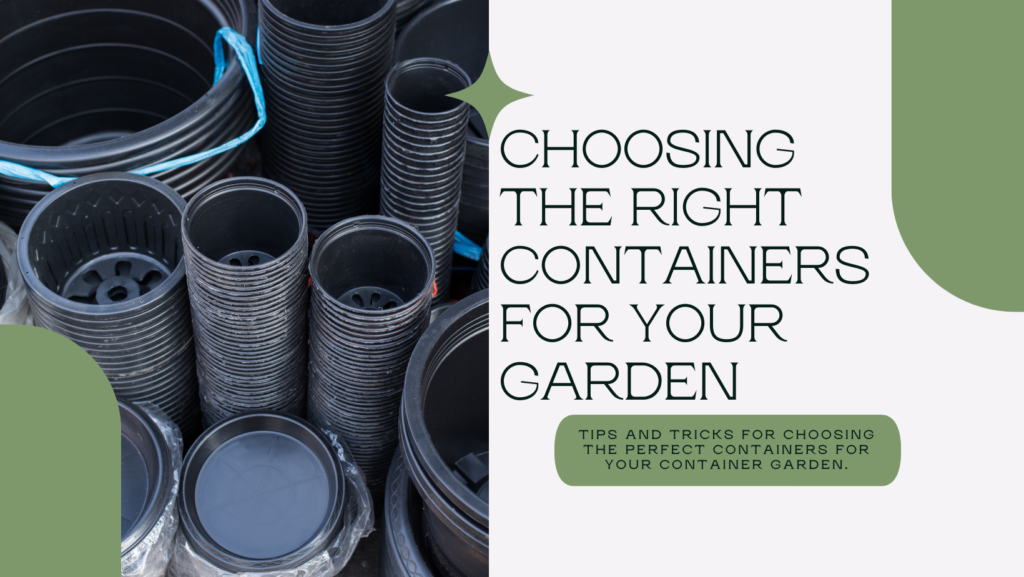
There is a wide range of containers suitable for urban gardening. Here are a few popular options:
- Traditional Terracotta Pots: These classic clay pots offer a timeless aesthetic and excellent porosity, allowing air and moisture to circulate around the roots.
- Self-Watering Containers: Ideal for busy urban gardeners, self-watering containers feature built-in reservoirs that provide a steady water supply to the plants.
- Window Boxes: Perfect for vertical gardening, window boxes can be easily mounted on windowsills or balconies, adding beauty to your urban space.
- Hanging Baskets: Utilize vertical space by hanging baskets from walls or ceilings, creating a stunning display of cascading plants.
- Grow Bags: Lightweight and portable, grow bags are ideal for growing vegetables and herbs. They offer excellent drainage and can be easily moved for optimal sunlight.
To choose the most suitable containers for your urban garden, consider your gardening goals, space limitations, and the specific needs of your plants. With careful selection, you can create a visually appealing and thriving urban oasis right on your doorstep.
Selecting plants for urban container gardening
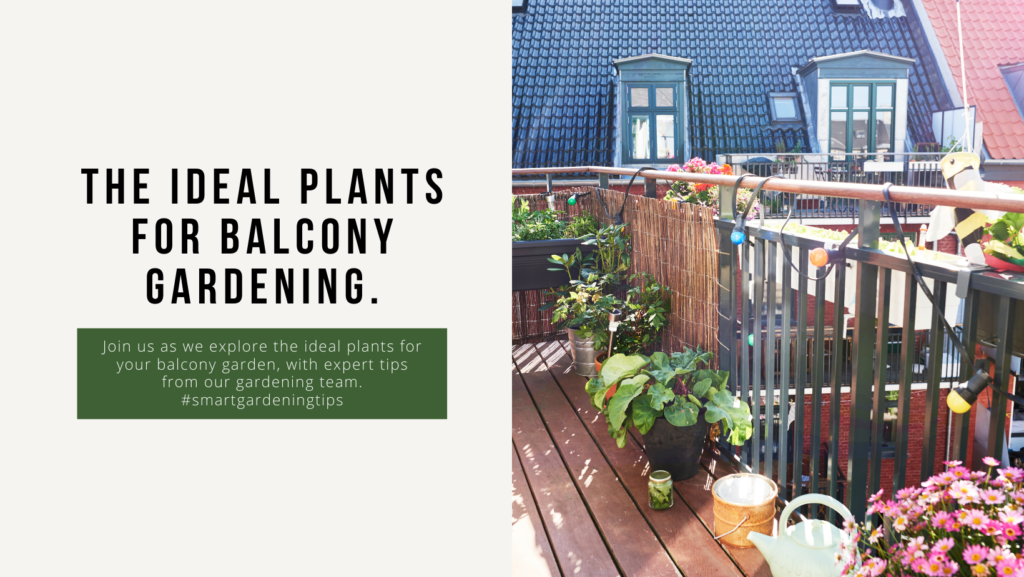
When it comes to urban container gardening, the right selection of plants is crucial for success. With limited space and sunlight, choosing the best plants that thrive in containers is essential to create a vibrant and beautiful urban garden.
For small spaces and limited sunlight, it is important to select plants that are adaptable and resilient. Here are some tips to help you choose the best plants for your urban container garden:
- Consider sunlight requirements: Assess the amount of sunlight your container garden receives throughout the day. Select plants that match the available light conditions. For limited sunlight areas, shade-loving plants such as ferns, hostas, and impatiens are excellent choices.
- Opt for compact and dwarf varieties: In small spaces, choosing compact and dwarf varieties of plants allows you to maximize the use of your containers. Look for plants labeled as “patio,” “bush,” or “dwarf” to ensure they stay small and don’t outgrow their containers.
- Pay attention to watering needs: Since containers have limited soil volume and can dry out quickly, it is important to select plants that have moderate to low water requirements. Drought-tolerant plants like succulents, ornamental grasses, and lavender are ideal choices.
- Consider the mature size of the plants: Take into account the mature size of the plants you choose to avoid overcrowding in your containers. Select plants that will grow well together without competing for space and resources.
- Think about foliage and bloom color: Create visual interest and enhance the beauty of your urban garden by choosing plants with a variety of foliage colors and bloom times. Mix and match plants with contrasting leaf shapes, textures, and colors to create a stunning display.
Remember to regularly inspect your plants for any signs of stress or nutrient deficiencies and provide appropriate care accordingly. With careful selection and proper care, your urban container garden can thrive and bring joy to your urban oasis.
So why wait? Start selecting the perfect plants for your urban container garden and transform your small space into a lush and vibrant sanctuary.
Watering and fertilizing practices for container plants

Proper watering and fertilizing are essential for maintaining the health and vitality of your container plants. Follow these techniques to ensure optimal growth and beautiful blooms:
Watering Techniques
1. Find the right watering balance: Container plants require more frequent watering compared to plants in the ground. However, overwatering can lead to root rot and other issues. Pay attention to your plants’ moisture needs by checking the top inch of soil. If it feels dry to the touch, it’s time to water.
2. Use the right watering method: For small containers, gently pouring water from a watering can or using a small hose attachment is sufficient. For larger containers, consider using a drip irrigation system or a self-watering container to provide consistent moisture.
3. Water deeply: When you water your container plants, make sure to saturate the entire root ball. This encourages deep rooting and helps plants withstand dry periods between waterings.
Fertilizing practices
1. Choose the right fertilizer: Select a high-quality, slow-release fertilizer specifically formulated for container plants. These fertilizers provide a steady supply of nutrients over an extended period.
2. Follow the recommended application rates: Over-fertilizing can damage plants and cause nutrient buildup in the soil. Always follow the instructions on the fertilizer package for the recommended application rates.
3. Fertilize on a regular schedule: Container plants require regular fertilization throughout the growing season. Typically, fertilize every 4-6 weeks to ensure a continuous supply of nutrients for healthy growth.
4. Avoid fertilizing during dormancy: Most container plants enter a dormant period during winter. Avoid fertilizing during this time, as plants are not actively growing and won’t utilize the nutrients effectively.
| Fertilizer Name | Nutrient Composition | Application Rate |
|---|---|---|
| Brand A Container Mix | NPK 10-10-10 | 1 tablespoon per gallon of soil |
| Brand B All-Purpose Fertilizer | NPK 20-20-20 | 2 teaspoons per gallon of water |
| Brand C Organic Blend | NPK 5-5-5 | Follow package instructions |
Unique techniques for maximizing space in urban gardens
When it comes to urban gardening, space is often a luxury. But don’t let limited square footage hold you back from creating a lush and thriving garden in the heart of the city. By employing unique techniques and thinking vertically, you can make the most of your small urban space and transform it into a green oasis.
One of the most effective techniques for maximizing space in urban gardens is vertical gardening. This method involves growing plants vertically, whether on walls, trellises, or hanging structures. Vertical gardening allows you to utilize the vertical space in your garden, freeing up precious ground space for other purposes. It’s an excellent solution for small balconies, rooftop gardens, or even urban courtyards.
Vertical gardening offers numerous advantages, including:
“Vertical gardening is a game-changer for urban gardeners, providing a visually appealing and space-saving solution. By growing plants vertically, you can create stunning living walls, grow climbing plants, and maximize every inch of your urban garden.”
There are several vertical gardening techniques you can explore:
- Living Walls: A living wall is a vertical structure covered in plants. It can be constructed using a variety of materials, such as pocket wall planters, modular panels, or even repurposed items like pallets. Living walls not only provide a striking focal point in your urban garden but also maximize space by growing plants vertically.
- Hanging Plants: Hanging plants are an easy way to add greenery to your urban garden while saving space. You can hang planters from walls, railings, or even ceiling hooks. Choose trailing plants like ivy, ferns, or string of pearls for a cascading effect.
- Trellises and Arbors: Install trellises or arbors in your urban garden to support climbing plants. These structures not only provide vertical space for your plants but also add an architectural element to your garden design. Consider varieties like jasmine, morning glory, or climbing roses for a stunning display.
By utilizing vertical gardening techniques, you can cultivate a wide variety of plants, from flowers to herbs and even vegetables. The possibilities are endless, offering a flexible and creative approach to urban gardening.
| Advantages of Vertical Gardening | Vertical Gardening Techniques |
|---|---|
| Maximizes vertical space | Living Walls |
| Creates visually appealing display | Hanging Plants |
| Allows for a variety of plant options | Trellises and Arbors |
In addition to vertical gardening, there are other unique techniques you can employ to maximize space in your urban garden:
- Stackable Planters: Stackable planters allow you to create a tiered garden, maximizing space while adding visual interest. These planters are designed to stack on top of each other securely, creating a vertical tower of plants.
- Window and Balcony Boxes: Window boxes and balcony boxes are excellent solutions for those with limited outdoor space. These long, narrow containers can be mounted on railings or windowsills, allowing you to grow a variety of plants without taking up valuable floor space.
- Herb Spirals: Herb spirals are a popular permaculture technique that maximizes space while creating the perfect environment for growing herbs. By building a spiral-shaped planter, you can grow a diverse range of herbs in different microclimates, all within a small footprint.
These unique techniques for maximizing space in urban gardens not only provide practical solutions but also add a touch of creativity and innovation to your gardening endeavors. Explore these ideas and transform your small urban space into a thriving green oasis.
Innovative ways to repurpose containers for gardening
Looking for creative and sustainable ways to elevate your urban garden? Repurposing containers for gardening is an innovative approach that adds personality and functionality to your space. By repurposing everyday objects, you can transform them into unique planters that not only beautify your garden but also promote sustainability. Let’s explore some exciting ideas for repurposing containers and breathe new life into your urban gardening experience.
1. Upcycled Furniture
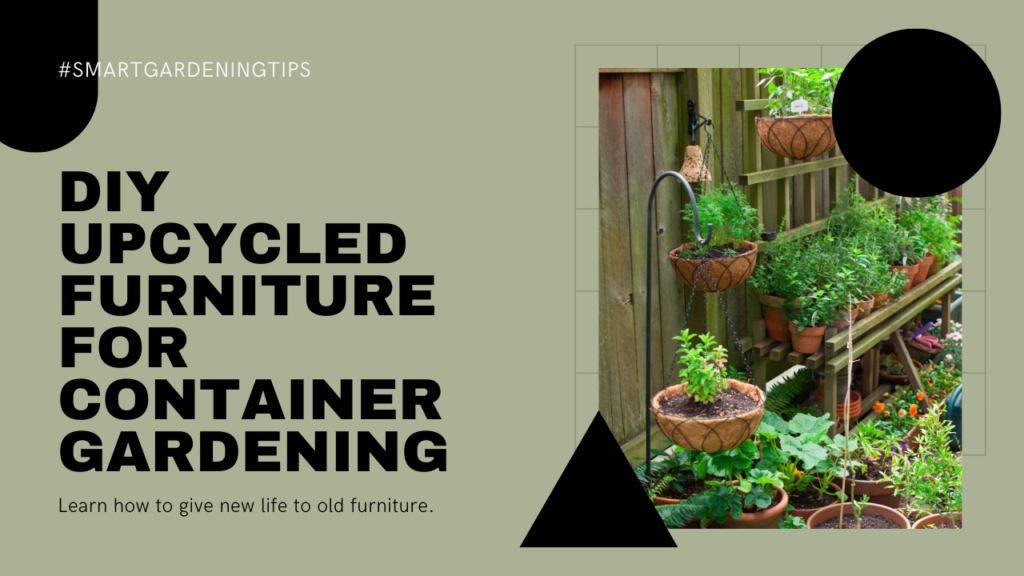
Why not give old furniture a new purpose by turning them into stunning planters? An old wooden dresser or a vintage bathtub can be transformed into a charming garden display. With a fresh coat of paint and some waterproofing, these repurposed containers offer a unique aesthetic while providing ample space for your plants to thrive. Get inventive and repurpose that forgotten piece of furniture into a striking planter that will be the envy of your neighbors.
2. Tin Cans and Mason Jars
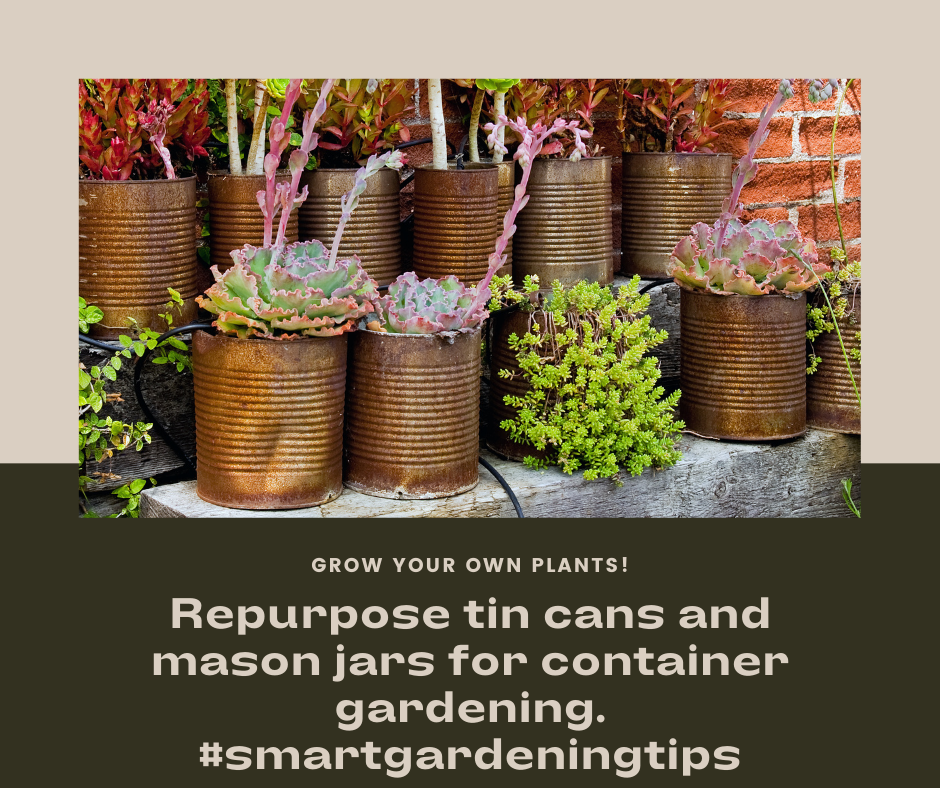
Don’t underestimate the potential of simple household items like tin cans and mason jars. These versatile containers can easily be repurposed as mini herb gardens or small succulent planters. Paint them in vibrant colors, attach them to a wooden pallet, or hang them from a wall to create a vertical garden. With a little imagination, you can transform these humble containers into eye-catching displays that add a touch of charm to any urban garden.
3. Vintage Suitcases

Give your urban garden a whimsical touch by repurposing vintage suitcases as planters. Stack them on top of each other to create a multi-level garden display or place them side by side for a retro-inspired arrangement. Line the suitcases with plastic and add drainage holes to ensure proper plant care. As an added bonus, these repurposed containers offer convenient storage space for your gardening tools, making them both practical and visually appealing.
4. Wine Barrels
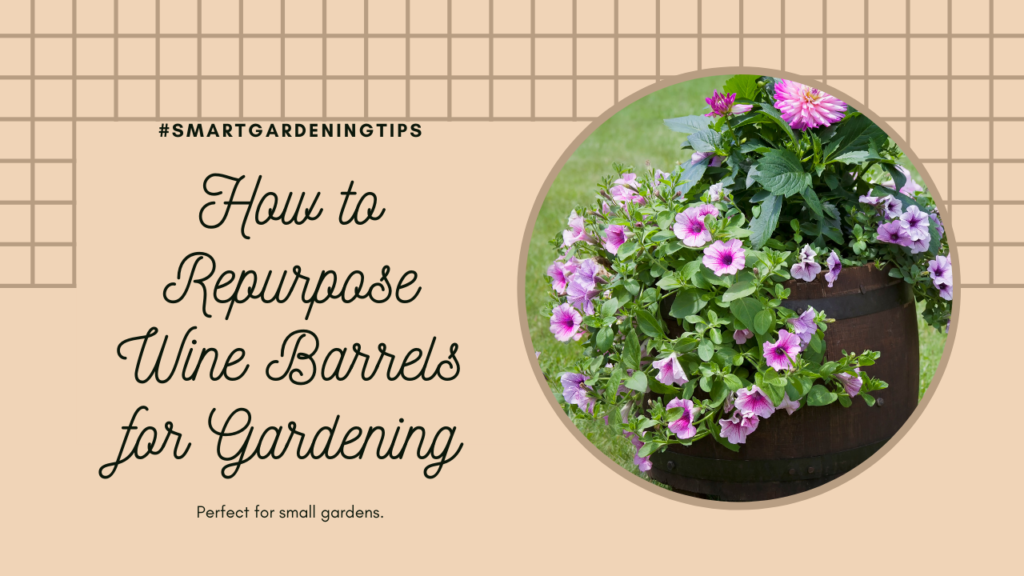
If you’re aiming for a rustic look in your garden, repurposing wine barrels as planters is an excellent choice. These sturdy containers provide ample room for large plants or even create an entire vegetable garden. Cut the barrels in half and fill them with nutrient-rich soil, and you’re well on your way to growing your garden oasis. Not only do wine barrel planters add a touch of elegance to your urban garden, but they also have a rich history that adds character to your space.
5. Rain Boots and Rubber Tires

Give your garden a playful twist by repurposing rain boots, rubber tires, or even children’s toys as planters. Fill up colorful rain boots with soil and add vibrant flowers for a cheerful display. Alternatively, paint and stack old tires to create a unique vertical planter. These repurposed containers offer a fun and unconventional way to showcase your plants while bringing a touch of whimsy to your urban garden.
With these innovative ideas for repurposing containers, you can transform ordinary objects into extraordinary planters. Not only will you create a stunning visual display, but you’ll also contribute to a more sustainable and eco-friendly lifestyle. So, let your creativity shine and explore the limitless possibilities of repurposing containers for gardening.
Maintenance and troubleshooting in urban container gardens

Maintaining healthy container plants in an urban garden requires careful attention and proactive troubleshooting. By following these tips and addressing common issues, you can ensure the long-term success and vitality of your urban container garden.
1. Regular Maintenance
To maintain healthy container plants, it’s important to establish a consistent maintenance routine. Here are a few key tasks to include:
- Watering: Container plants often require more frequent watering than those in traditional gardens. Check the soil moisture regularly and water when it feels dry about an inch deep.
- Fertilizing: Provide adequate nutrients to your container plants by fertilizing regularly. Use a balanced, slow-release fertilizer or organic compost to promote healthy growth.
- Pruning and Deadheading: Prune any dead or damaged foliage and remove spent flowers to encourage new growth and maintain an attractive appearance.
2. Common Issues and Solutions
Urban container gardens may face several common issues. Here are some troubleshooting tips to address these problems:
| Issue | Solution |
|---|---|
| Poor Drainage | Ensure proper drainage in your containers by adding drainage holes or using pots with drainage systems. Avoid overwatering, as excess moisture can lead to root rot. |
| Pests and Diseases | Monitor your plants regularly for signs of pests or diseases. Use organic pest controls or consult a horticulturist for appropriate treatments. |
| Nutrient Deficiencies | Check for nutrient deficiencies by observing yellowing leaves or stunted growth. Adjust your fertilization regimen to provide the appropriate nutrients. |
| Extreme Temperatures | Shield your container plants from extreme temperatures by moving them to protected areas or providing shade during hot summer days. Insulate them during winter to prevent frost damage. |
3. Professional Assistance
If you encounter persistent issues or are unsure about how to address certain problems, don’t hesitate to seek professional assistance. Local gardening centers, horticulturists, or urban gardening experts can provide valuable insights and guidance tailored to your specific needs.
By implementing proper maintenance practices and being proactive in troubleshooting, you can enjoy thriving plants and a beautiful urban container garden. Remember to regularly monitor and adjust your care routine based on the specific needs of your plants. Happy gardening!
FAQ
Q. What are some urban container gardening techniques?
A. Urban container gardening can be done using various techniques such as vertical gardening, hanging baskets, and using elevated platforms to maximize space. These techniques allow city dwellers to create beautiful gardens even with limited space.
Q. What are the benefits of urban container gardening?
A. Urban container gardening offers several advantages. It improves air quality, provides fresh produce, and enhances the aesthetics of urban spaces. It also promotes relaxation, reduces stress, and encourages a connection with nature.
Q. How do I choose the right containers for urban gardening?
A. When selecting containers for urban gardening, consider factors like material, size, and drainage. Choose containers made of durable materials such as plastic or ceramic, ensuring they have proper drainage holes to prevent overwatering.
Q. Which plants are best for urban container gardening?
A. When selecting plants for urban container gardening, opt for varieties that thrive in small spaces and limited sunlight. Some suitable options include herbs, salad greens, cherry tomatoes, and compact flower species like petunias and marigolds.
Q. How should I water and fertilize my container plants?
A. Water container plants thoroughly when the top inch of soil feels dry. Fertilize regularly with a balanced, water-soluble fertilizer to provide essential nutrients. Avoid overwatering or over-fertilizing, as this can harm the plants.
Q. What are some unique techniques for maximizing space in urban gardens?
A. To make the most of limited space, explore vertical gardening techniques such as using trellises or vertical planters. You can also utilize hanging baskets, tiered plant stands, or repurpose everyday items like old pallets or shoe organizers as vertical planters.
Q. How can I repurpose containers for gardening in innovative ways?
A. Get creative by repurposing everyday objects as planters, such as old buckets, tin cans, or even broken ceramic pots. You can also use items like wine barrels, old bathtubs, or wooden crates for larger container gardens.
Q. How can I maintain healthy container plants in an urban garden?
A. To maintain healthy container plants, ensure they receive adequate sunlight, water them regularly but avoid overwatering, and keep an eye out for pests or diseases. Provide appropriate fertilization, prune as needed, and monitor the plants’ overall health and growth.
Q. What are some common issues in urban container gardening and how do I address them?
A. Common issues in urban container gardening include overwatering, insufficient sunlight, pest infestations, and nutrient deficiencies. To address these, adjust watering practices, relocate the containers for more sunlight, use organic pest control methods, and provide appropriate fertilization.
Conclusion
In conclusion, urban container gardening techniques offer a practical and enjoyable solution for city dwellers looking to cultivate plants in small spaces. With the right selection of containers, plants, and proper care, you can transform your urban environment into a beautiful and thriving oasis. Whether you have a balcony, rooftop, or limited outdoor space, urban container gardening allows you to connect with nature and enjoy the benefits of gardening.
By utilizing the various techniques discussed in this article, such as vertical gardening and repurposing containers, you can maximize your space and create a lush and vibrant urban garden. Not only does urban container gardening enhance the aesthetics of your surroundings, but it also provides numerous benefits. From improving air quality and reducing stress levels to providing fresh produce at your doorstep, this sustainable practice has a positive impact on your well-being.
So why wait? Start your own urban container garden today and experience the joy and fulfillment of tending to your plants in the midst of the city. With a little creativity, patience, and dedication, you can enjoy the therapeutic benefits of gardening and the beauty of nature right in your urban dwelling. Embrace urban container gardening techniques and watch your small space come alive with greens, flowers, and the wonders of growth.


